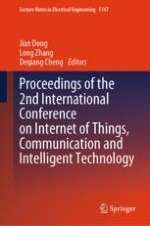2024 | OriginalPaper | Buchkapitel
BCSNP-ML: A Novel Breast Cancer Prediction Model Base on LightGBM and Estrogen Metabolic Enzyme Genes
verfasst von : Tianlei Zheng, Shi Geng, Wei Yan, Fengjun Guan, Na Yang, Lei Zhao, Bei Zhang, Xueyan Zhou, Deqiang Cheng
Erschienen in: Proceedings of the 2nd International Conference on Internet of Things, Communication and Intelligent Technology
Verlag: Springer Nature Singapore
Aktivieren Sie unsere intelligente Suche, um passende Fachinhalte oder Patente zu finden.
Wählen Sie Textabschnitte aus um mit Künstlicher Intelligenz passenden Patente zu finden. powered by
Markieren Sie Textabschnitte, um KI-gestützt weitere passende Inhalte zu finden. powered by
